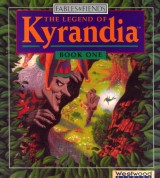Review for The Da Vinci Code
I'm going to go way out on a limb here and guess that you've heard of The Da Vinci Code by now, perhaps even experiencing it for yourself in one medium or another. Okay, so maybe that's not such a stretch. Judging from the phenomenal sales numbers of Dan Brown's novel, even some secluded Aboriginal tribes have ordered a copy. This despite the fact that it's now become fashionable to bash the book as the lowest form of pop culture schlock. If you're one of the eight people who still hasn't read it, perhaps you've crammed yourself into a ridiculously packed theater to see the recent movie, which has been mercilessly panned as uninspired dreck by most film critics. (Are we seeing a pattern here?) Now the new actio… uhh, I mean… adventure(ish) game is upon us to complete The Da Vinci Code trifecta, and while it proves a generally entertaining ride that may enjoy the same commercial success as its predecessors, it's unable to avoid some critical pitfalls of its own along the way.
In many respects, The Da Vinci Code is tailor-made for an interactive experience. Sure, the plot is sensationally absurd, but the premise is intriguing, and a breathless treasure hunt of cryptic clues and devious puzzles simply begs for audience involvement. And let's face it – even popular literary pap is a step up from much of what we get in video games, not that it requires such lowered expectations. Although it demands an incredible suspension of disbelief, DVC provides a tantalizing storyline with plenty of gameplay opportunities. Unfortunately, it wastes some of those opportunities with ill-conceived design decisions and technical weaknesses, but Brown's story nevertheless holds up well as a foundation.
The basic plot of the game is similar to that of the book, but diverges in several key areas. I'll spare everyone a lot of narrative overkill, but DVC begins with the curator of the Louvre being murdered inside the famous museum. Before breathing his last, however, he is able to leave a series of obscure clues for his estranged granddaughter, French cryptographer Sophie Neveu, and American symbologist Robert Langdon to decipher. When the police misunderstand the clues, believing them to point at Langdon as the prime murder suspect, he and Neveu must flee in order to clear his name and unravel an ever-deepening mystery that may ultimately expose the profound truths about the Holy Grail and the bloodline of Jesus Christ, kept concealed for centuries. While evading the police, Langdon and Neveu must also contend with those seeking to discover these astonishing secrets first, making the path to this hallowed treasure as precarious as it is perplexing.
The latter arises from an elaborate series of complex enigmas, from anagrams to ciphers to riddles that draw primarily on art and religious history as sources. Of course, there would be no surprise for the player already familiar with the story if the original puzzles were simply recreated in the game, so DVC offers up new clues and solutions, and doesn't stop there. By adding several new locations and a whole slew of additional puzzles, the game delivers a steady stream of intellectual obstacles. Designed by Charles Cecil of Broken Sword fame, the puzzles come in all shapes, sizes, and degrees of difficulty (not to mention quality), representing a virtual smorgasbord of traditional adventure activities. Along with some fairly simplistic inventory puzzles, the game includes codebreaking, pattern identification, jigsaws, sliders, and even a maze to challenge your wits. While there are some standalone logic tasks, the vast majority of puzzles are intertwined and multi-layered, requiring you to make progress on several fronts to accomplish your ultimate goals.
To call the puzzles "organic" to the story would be to totally misunderstand Brown's premise, as the entire plot is a rather preposterous mental obstacle course. So rather than emerging naturally from the story, the puzzles really ARE the story in The Da Vinci Code. But while this may strain any sense of credibility in passive media, in the game you'll be too busy solving these conundrums to question them too seriously. The sheer volume (I counted at least fifty different puzzles) and variety ensures that there's something for everyone (and probably something for everyone to hate), and in general they're reasonably clued and well-crafted. On the other hand, at times the overall vision feels rather uninspired, simply following a rote checklist of conventional puzzle types. While I didn't find the game always provided enough helpful direction, the self-contained environments ensure that players can't stray too far off course, so it's never long before you find your way. And for several of the puzzles, an in-game hint system is provided with helpful tips from Langdon and Neveu, though this is not done consistently throughout. There was a single puzzle I felt was unfairly obscure, imposing an annoying trial-and-error exercise to overcome, but the puzzles are easily one of the strongest features of the game.
Unfortunately, with the puzzles comes the peril, and it's here that The Da Vinci Code takes a serious turn for the worse. It's also the point where many adventure purists may decide the game moves squarely into the realm of action-adventure, and there's more than a little merit to that notion. But as with all blurred genre lines, that determination will be a personal choice, so I'll set aside any subjective debates for now and deal only with the impact of the action on the game itself.
In an attempt to give the gameplay a little more punch – in this case, literally – The Da Vinci Code requires players to do a fair bit of fighting in between the puzzle solving. While in the book there are a few dramatic, action-packed moments to spice things up, the game wrongly decides that much more of the same would be a good thing. The immediate problem with this decision is that it's completely out of character for the two protagonists. Langdon and Neveu are intellectuals, and it simply makes no sense to have them plowing their way through dozens of security guards, police, and fanatical monks. But that's an abstraction that's secondary to the main concern: namely, it just isn't any fun.
When confronted by an opponent, you must attempt to maneuver yourself into position in real time for a first strike. If successful, you'll grapple with the other person and have the opportunity to dole out some heavy damage; if you fail, the same result will occur, but this time you'll be on the defensive. Either way, what follows is a series of onscreen diagrams showing left, right, or combined mouse clicks. Match the pattern successfully in the allotted time, and your character will chuck some serious knuckles or deftly avoid the same. Mess up, and kiss your precious hit points goodbye, or find yourself in defense mode for the next series. That's right, the next series. Any given fight will require several rounds of these monkey-see, monkey-do combat tactics, making even a single scrap drag out far longer than your interest level. Lather, rinse, and repeat over the course of the whole game, and we're talking some serious tedium. It may seem like a paradox to refer to boring tension, but DVC manages it.
The combat isn't easy, either. You can and almost certainly will die at various times. Even if your reflexes are up to the challenge, the lousy implementation fights dirty. The lowest blow is the insanely responsive nature of the combined mouse click. The controls are so hyper-sensitive that if you don't time your clicks absolutely perfectly, it'll register as a failure. At least, that's what I assume is the problem, though since I could never discern the difference between a pass or fail, it could just as easily be gnomes flipping a coin. In any case, it causes more than its fair share of grief. If you're thinking a quick keyboard re-mapping would solve this problem, think again, as the default configuration is permanent. Lucky DVC offers gamepad support to bypass this problem, right? Wrong. How on earth a game also available for PlayStation 2 and Xbox can not support gamepads on PC is a mystery not even a cryptographer could solve. Nevertheless, it's true, and for that reason alone, I would recommend buying a console version of the game if you own one of those systems.
The other aggravation is that the combat mechanics are designed strictly for one-on-one altercations. This is all very well and good, except DVC routinely throws multiple opponents at you. Theoretically, you'll square off against one while your partner tussles with the other, and occasionally it works that way, but all too often you'll be blindsided in the middle of a fight, which interrupts your own engagement and leaves you disoriented and vulnerable to another attack. Nice.
The game does offer a basic stealth alternative, allowing your character to move quietly in a crouch and throw objects to distract opponents. You can also drag unconscious bodies out of sight before they're discovered. If you're able to sneak up behind someone, you can initiate a stealth attack that may (but not always does) render him unconscious. You'll quickly find yourself using this method as often as possible to spare yourself another drawn out affair. Otherwise, I didn't find much use in sneaking, as the frequent need to re-trace your steps often means that you'll be spotted at some point and end up having to fight anyway. Far easier to clean out an area in advance and then explore and solve puzzles at your leisure.
When wounded, there are bandages you can find throughout the game for healing yourself, but these don't carry over from one location to the next for some inexplicable reason. The larger problem is that you can be in relatively good health, and if one encounter starts going badly for the reasons outlined above, it can all disappear in a hurry. Making matters worse is the checkpoint save system that can force you to replay some fairly lengthy segments of the game (including all the puzzles) over again. I'm not a fan of the "catering to consoles" complaint, but in this case, it's hard not to feel deprived by the inability to save at will. On the plus side, the game does offer three difficulty options. And perhaps more importantly to those interested mainly in the puzzles, there are cheat codes available to get you through the game largely unscathed. Normally I don't consider cheat codes a "feature" worth highlighting, but in this case it may very well be a determining factor for those concerned about the action overwhelming the value of The Da Vinci Code as a legitimate adventure. As an added bonus, one of the cheats enables players to return to two locations after completing the game. There is no plot to work through during these extra levels; just a generous helping of additional puzzles to solve.
While the combat is certainly the most demanding physical element of DVC, it's not the only one. Various activities like pushing and lifting large objects, turning cranks, and even cutting locks with boltcutters are accomplished by following a sequence of timed keystrokes and mouse movements. There's nothing overly challenging about it, and if you fail you simply try again. The intention is to create a more tangible sense of interacting with the environment. But while I admire the sentiment, I found very little connection between the onscreen action and the game controls, and before long, this seemed like yet another repetitive chore that offered no benefit to the gameplay. For those who have played Indigo Prophecy/Fahrenheit, you'll find many similarities in both the basic action mechanics and the combat system, though here there's a more defined separation between the controls and the onscreen events, and they are much different games overall. And while that game had the benefit of novelty working for it, already the system is showing itself to be shallow and tiresome.
Apart from the action sequences, The Da Vinci Code plays out like a customary third-person, direct-controlled, 3D adventure. Though come to think of it, there really haven't been enough of those to consider the control scheme customary yet. But like Dreamfall, the game uses a combination of keyboard and mouse for navigation, with the keyboard providing screen-relative movement and the mouse freely rotating the camera around the character centered in view. The setup is intuitive and works fine overall, though it's a little rough around the edges. The character movements aren't particularly fluid, and the default walking speed is too slow. There's an option to speed up ever-so-slightly, but only for a brief time before your character begins seriously sucking wind and slows down. I have no idea why this is so; with all the fighting the game makes them do, I'd have thought they'd be in better shape. But no.
While moseying your way through the game, there is no visible interface until you approach a hotspot, which then automatically calls up a display showing the item description and (single) interactive option. Strangely, a few items glitter to draw your attention, while others will highlight when you come into range, and still others won't do either, so you need to keep one eye on the description area to know for sure if an interaction is possible. At various times you can zoom into an area for a closer look in first-person with a movable cursor. Unfortunately, the camera movement is so dodgy in this mode that it's a constant frustration. At least the inventory works well, allowing you to examine, rotate, and combine items quickly and easily.
As you progress, you'll alternate between Langdon and Neveu, sometimes travelling alone and at other times together. Unfortunately, you can't switch between them at will, and the game really makes no use of the partnership to solve puzzles. And since neither has their own specific abilities to contribute, as playable characters they are essentially interchangeable beyond the obvious cosmetic differences. When together, however, the game routinely switches to non-interactive animations or voiceovers while one or the other character expounds at length on some historical fact that may or may not have any direct bearing on the plot. It's actually pretty interesting stuff, but it does have the effect of creating a very stop-and-go pacing which could have been avoided, especially as much of the information is recorded in a handy encyclopedia accessed through the menu screen. Remarkably, while the two academics prove a veritable fount of obscure information, neither has the intelligence to get out of your way in confined areas, though thankfully this is rarely an issue.
Like so many other aspects of the game, production values are a mixed bag in The Da Vinci Code. The environments are quite interesting, but the graphics aren't overly detailed, and in some cases there are corners cut quite noticeably. So while it's quite enjoyable to admire the impressive architecture or rich décor of real locations like Westminster Abbey, the Temple Church, and Saint Sulpice, one can't help but wonder why the curator of Louvre didn't notice he had four or five forgeries of the same painting adorning the walls. I mean, come on. I hate being a nitpicker, but basic stuff like that is an immersion-killer. Mind you, that's nothing compared to the several prolonged instances of the game being consumed in a horrendous yellow light. This was an unintentional technical glitch, of course, but a critical one.
Characters don't fare much better than the scenery. The character models are decently rendered, but they're devoid of almost any expression. Then again, that perfectly suits the dull, flat performances of the voice actors, who seem to think that life-threatening situations and extraordinary secrets are just another day at the office. The voices themselves are just fine, though not provided by Tom Hanks and Audrey Tautou, who portray the characters in the movie. But a little direction would have ensured an emotional range that included something other than "ho hum". The music, on the other hand, is excellent, with choirs and orchestras setting just the right atmosphere for the game.
Returning at last to Brown's original story, it should be noted that while the game does a good job of adding new scenarios to bolster player activity, it does a poor job of conveying the story itself. The plot is advanced mostly through a series of disjointed, expositional cutscenes that just barely manage to cover the basics, leaving many narrative gaps in its wake. This won't affect anyone already familiar with the book or movie, but if the game is your first exposure to The Da Vinci Code, you may find yourself struggling to fully grasp details and plot twists that aren't sufficiently explained. It's enough to make sense of the game for the most part, but it will likely leave you wondering what all the fuss has been about.
When all is said and done, The Da Vinci Code is as difficult to assess as it is to label. It's not so much a mediocre game as it is an uneven collection of hits and misses. As an adventure, it's a pleasingly solid contribution to the genre, with a wide variety of brain teasers to supplement a fascinating story that's perfectly suited for an interactive experience. However, the inclusion of so many action sequences will likely discourage many hardcore adventure gamers, and even for those willing and able to meet the challenge, the insipid nature of the combat drags the game down, as do pacing issues, middling production values, control problems, and other technical weaknesses. Still, I experienced more fun than frustration during the twelve or so hours it took me to complete the game, and while there's much to endure, there's more to enjoy. It's not the Holy Grail of gaming, and may not even be your cup of tea, but if you know what to expect going in, you may just find a nice little taste of The Da Vinci Code phenomenon.
































